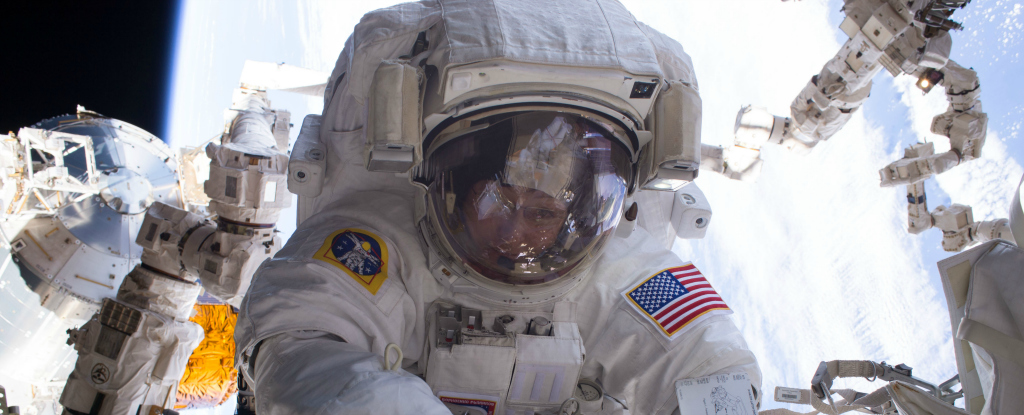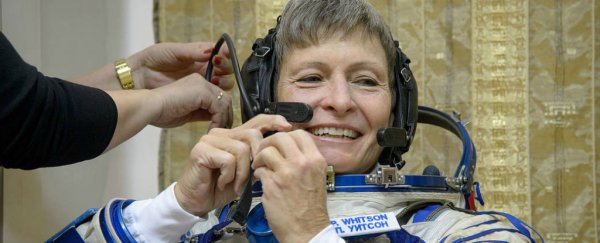Peggy Whitson, a 57-year-old NASA flight engineer, has made history this week by floating out into the vacuum of space for the eighth time in her career - making her the oldest and most experienced woman to perform a spacewalk.
The astronaut has been on board the International Space Station (ISS) since November, and is the perfect reminder that it's never too late to achieve your goals… even if those goals involve stepping out into the vast darkness of empty space.
This is Whitson's third stint on board the ISS - the science laboratory orbiting around 400 km above Earth's surface - and Thursday was the eighth time she's ventured out to conduct repairs on the station.
 Whitson's seventh spacewalk. Image:NASA
Whitson's seventh spacewalk. Image:NASA
This time, she and her spacewalking partner, mission commander Shane Kimbrough, were tasked with a pretty crucial upgrade - they reconnected the 'parking dock' of the ISS, known as the pressurised mating adapter-3 (PMA-3), which NASA had moved earlier in the week.
PMA-3 provides the pressurised interface between the ISS and a docking adaptor, which allows incoming spacecraft carrying supplies, crew, and equipment to park at the space station and unload.
Halfway through the 7-hour spacewalk, Whitson broke the record for the longest a woman has ever spent in space - passing more than 50 hours and 40 minutes of accumulated spacewalking time.
She's also the oldest woman to ever perform a spacewalk, and last year became the oldest woman in space.
Spacewalks are a regular part of the ISS crew's roster - in total, astronauts have spend 1,243 hours and 42 minutes outside the ISS across 199 spacewalks - but that doesn't mean there aren't still huge risks associated with stepping out into space.
Not only are the astronauts are out there for hours with no access to a bathroom, they're also at risk of floating off into space if their tether fails, Gravity-style.
Canadian astronaut Chris Hadfield has famously spoken out about becoming temporarily blinded during a space walk, when the mixture of oil and soap solution that astronauts use to keep their visors fog-free got in his left eye.
He started to tear up due to the pain, but because there was no gravity, this just spread the solution to his other eye.
"Now I was completely blind outside of the spaceship," he said in a TED talk on fear back in 2014.
Thankfully, astronauts are trained to stay calm in these situations, and Hadfield managed to get back to the ISS safely.
During Thursday's spacewalk, the astronauts faced their own crisis when a thermal protection shield fell off the ISS and was lost to space.
Whitson and Kimbrough were reinstalling the shields to cover the space where the PMA-3 was previously located, but although three shields made it back onto the ISS successfully, one fell off during attachment, and is now orbiting the Earth as space junk.
Thankfully, there was no immediate danger to either astronaut or the rest of the crew. The duo improvised and covered the port with the PMA-3 cover that had been removed earlier that day.
"The plan worked, and the cover was successfully installed, providing thermal protection and micrometeoroid and orbital debris cover for the port," a NASA blog entry explains.
Whitson and Kimbrough are now safely back on board the International Space Station as part of expedition 50.
In April, Whitson will take over as commander of expedition 51, making her the first woman to command the ISS twice. We can't wait to see what records she smashes next.
